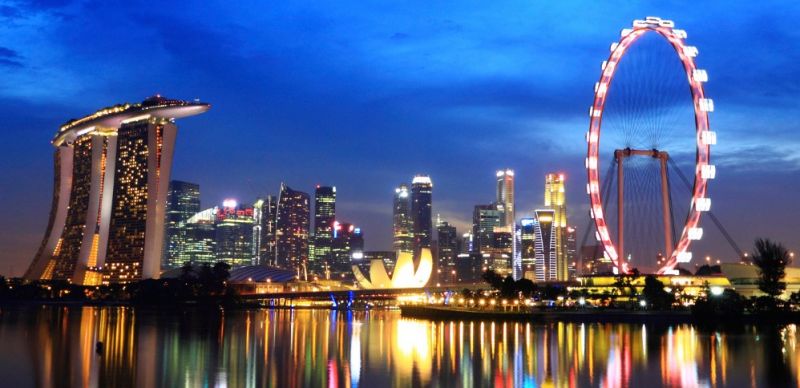Green Buildings in a Sustainable Singapore
Published on by Robert Brears, Founder of Our Future Water, Young Water Leaders, Mitidaption & Author (Springer Nature, Wiley) in Technology
In 2011, a Siemens-Economist Intelligence Unit study ranked Singapore as Asia’s greenest city. To ensure Singapore remains vibrant and sustainable, the city-state’s Green Building Masterplan has implemented several greener construction and building initiatives to improve the environment while reducing energy and water use.
Greening the City’s Skyline
Greening buildings is one of the most effective ways for a city, including Singapore, to reduce its overall carbon footprint in terms of energy and water efficiency, waste reduction and the use of sustainable materials.
In 2005, Singapore’s Building and Construction Authority (BCA) launched the BCA Green Mark scheme, a three-tiered rating system (Certified Gold, Gold and Platinum) to evaluate a building’s environmental impact and recognize its sustainability performance. Singapore’s goal is that by 2030 80% of all buildings achieve the standards of Green Mark, up from around 25% today.

The Green building Masterplan
In 2014, BCA launched the third Green Building Masterplan that maps out a holistic strategy that accelerates the greening of existing buildings and encourages building owners, managers and occupants to play a greater role in the green building movement.
Three major initiatives of the Masterplan include a:
- $52 million fund for the Green Buildings Innovation Cluster – an integrated research, development and demonstration hub – that will provide platforms to demonstrate innovative building solutions and build capabilities in energy efficiency
- $50 million Green Mark Incentive Scheme for existing buildings and premises
- New Green Mark Pearl Award to recognize developers and building owners who collectively reduce energy consumption.
Building water efficiency
Singapore’s Public Utilities Board, the national water agency, has also implemented a Water Efficient Building (WEB) certification that focuses on water usage in individual buildings. The WEB certification encourages non-domestic buildings, for example those run by businesses, industries and schools, to put in place water-efficient measures.
A building can be awarded WEB (Basic) if it installs water-efficient fittings or adopts water-efficient flow rates or flush volumes that save around 5% of its monthly water consumption. Buildings that are exemplary performers in water efficiency and who adopt the water efficiency management system – SS 577:2012 Water Efficiency Management Systems – can achieve WEB (Silver) or WEB (Gold) certification.
The take-out
Cities can use a range of voluntary certifications and awards to promote green buildings and reduce energy and water use.
*Robert C. Brears is the author of Urban Water Security (Wiley) and founder of Mark and Focus. Urban Water Security argues that, with climate change and rapid urbanization, cities need to transition from supply-side to demand-side management to achieve urban water security.
Attached link
http://markandfocus.com/2015/08/05/green-buildings-in-a-sustainable-singapore/Media
Taxonomy
- Sustainability
- Natural Resource Management
- Urban Water
- Energy Reduction
- Water-Energy Nexus
- Energy Efficiency
- Conservation